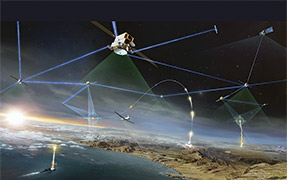European firms exploit GaN diode lasers
The advent of the gallium-nitride (GaN)based violet diode laser (VDL) attracted a lot of interest, particularly for its commercial implications in the optical data-storage market. Consumer products integrating VDLs should reach market in two to three years. That is not where the VDL market is today, however. Perhaps surprisingly, two of the companies driving the commercialization of the VDL are into the instrumentation market. What is more, they are not in Japan; they are in Europe.
Toptica Photonics AG (Martinsried/ Munich, Germany), for example, is exploiting the technology not only within its spectroscopic systems but also for graphic arts and disk-testing equipment. The specialization of PicoQuant GmbH (Berlin, Germany) is single photon counting based on time-resolved fluorescence spectroscopy for biology, chemistry, and materials science.
Unlike bulky continuous-wave (CW) solid-state and gas lasers, VDLs are compact, robust, and economical. This combination of factors makes them attractive for a wide range of applications, including life-science spectroscopy, trace analysis, and thermonuclear fusion monitoring. Given the immaturity of the first devices, however, a lot of technical effort was needed to build a reliable commercial instrument around the VDL. The companies thus serve as the door-opener for Nichia (Tokushima, Japan) to provide the best working environment for the VDLeither to get true single frequency, picosecond pulses, or stable power output at random pulse duty cycles, enabled by sophisticated thermal management of the diode. This is the key "added value" role played by these German companies, which helps Nichia to access the instrumentation market.
Toptica's approach is to use an external cavity design, which has proven successful for its longer wavelength products. This approach required changes to virtually all the component parts not only in the driver electronicslow-noise drivers are needed to stabilize the current and temperaturebut also in the collimating optics. Most importantly, changes were needed in the mechanical control of the grating. By adjusting the position of the grating angle, the operating frequency can be tuned, enabling a selection between 390 and 420 nm.
Printing is another important area of application for VDLs. There is currently a great deal of interest in computer-to-plate (CTP) pre-press, in which the digital image from the typesetting computer is imaged directly onto the photographic plate used for printing. The short wavelength of VDLs provides high-resolution performance in pre-press, while the technology avoids the high capital and operating costs usually associated with traditional lasers and is robust enough to accommodate the harsh environment found in the print industry. "Printing is a volume market, albeit a medium-sized one," says Toptica's cofounder Wilhelm Kaenders. "At the end of the year, more than 100 VDL-CTP systems will be equipped with our violet lasers, initiating a small revolution in the field of pre-press."
PicoQuant, on the other hand, is exploiting VDL technology for the analytical market, pushing the performance of the devices. "We work very closely with Nichia, giving them feedback," says Uwe Ortman, PicoQuant's manager of sales and system development. "We introduced them to pulsed operation with their diodes, [using them in] spectrometers and time-resolved microscopes." Another application for the devices is fast, time-correlated single photon counting.
VDLs have enabled several important additions in the measurement-equipment marketplace. Although this does not amount to the spectacular business volume predicted a few years ago, it nevertheless is providing revenues for two European companies and assisting Nichia with further refinement of this innovative addition to the diode-laser family.



